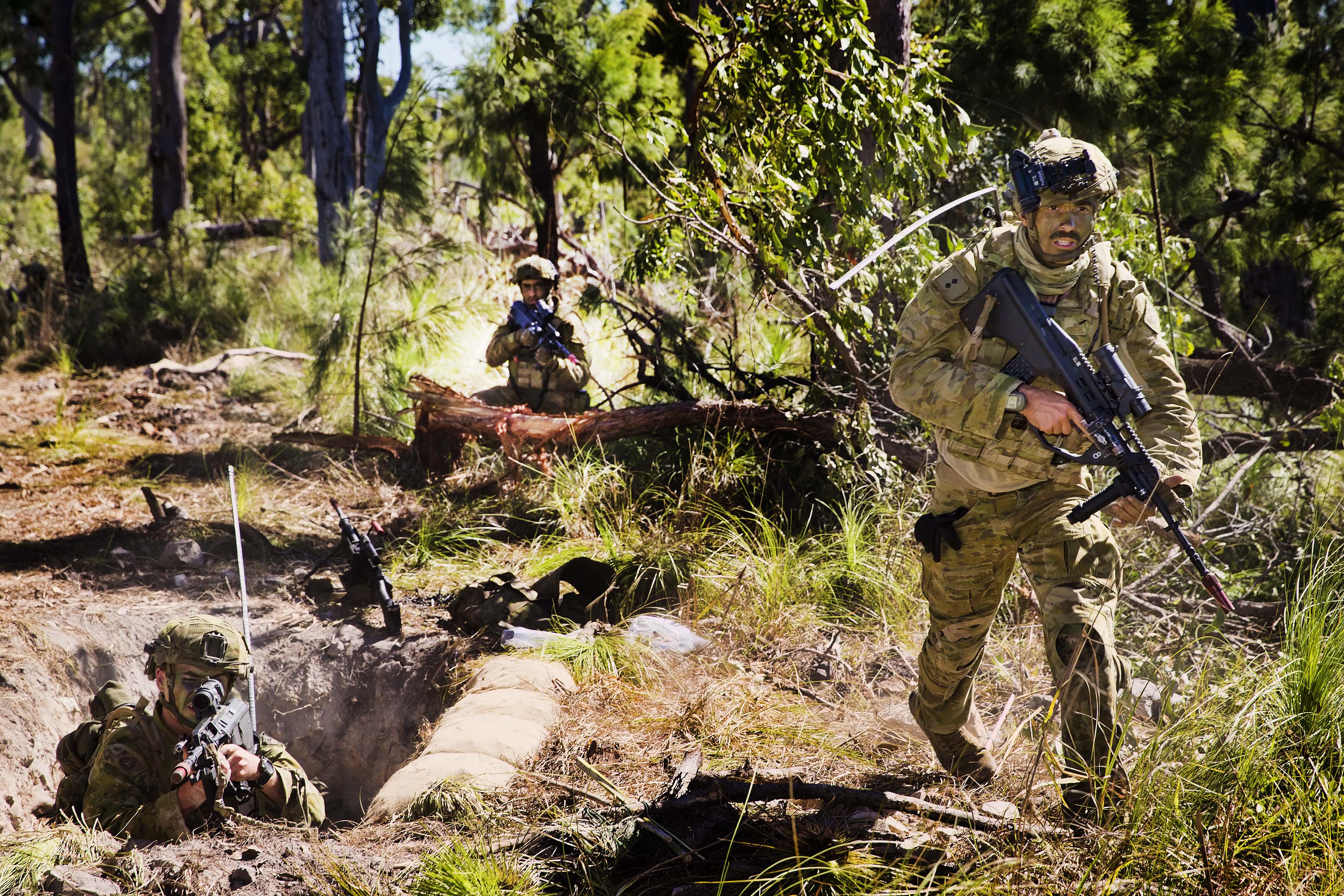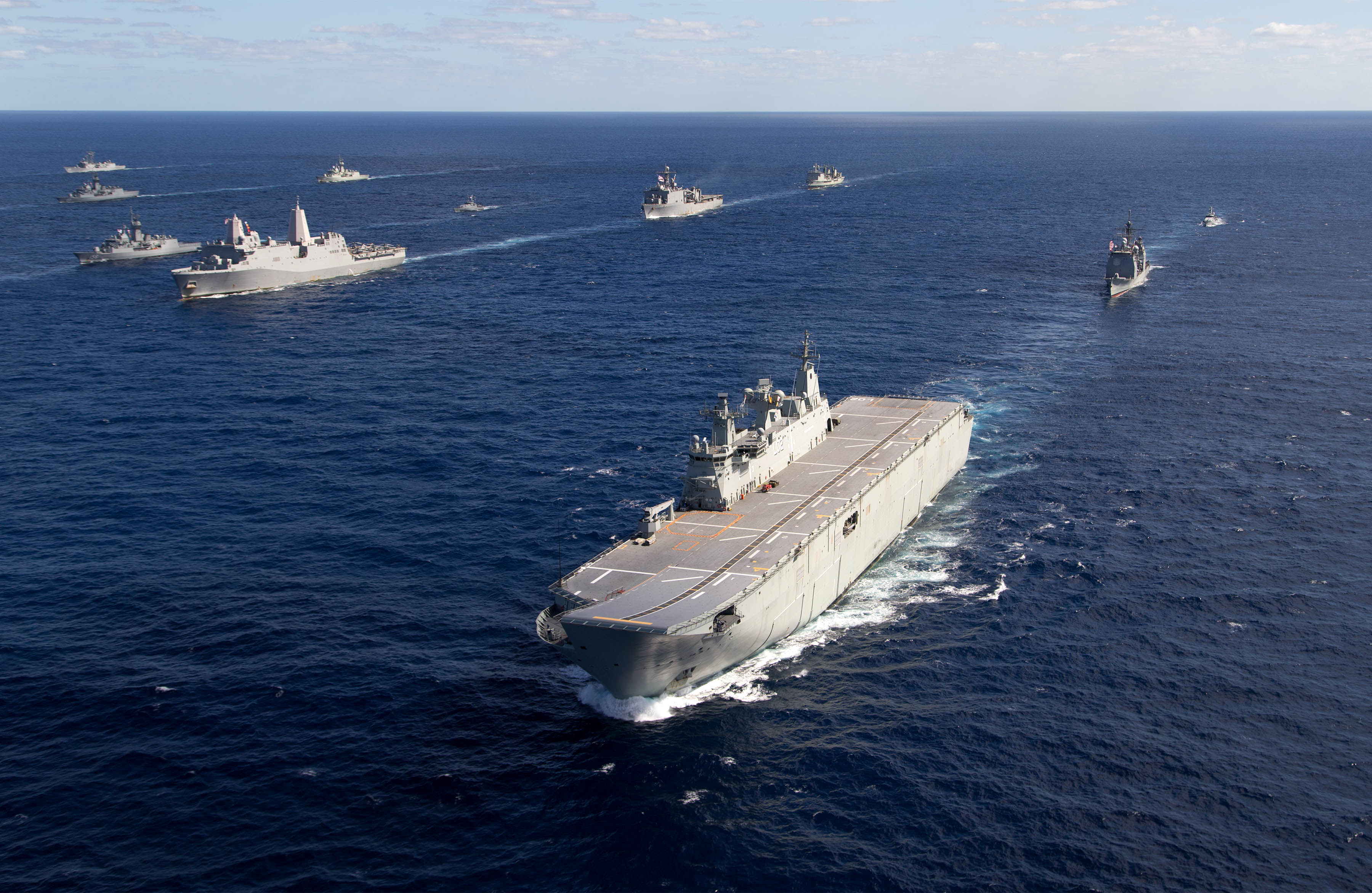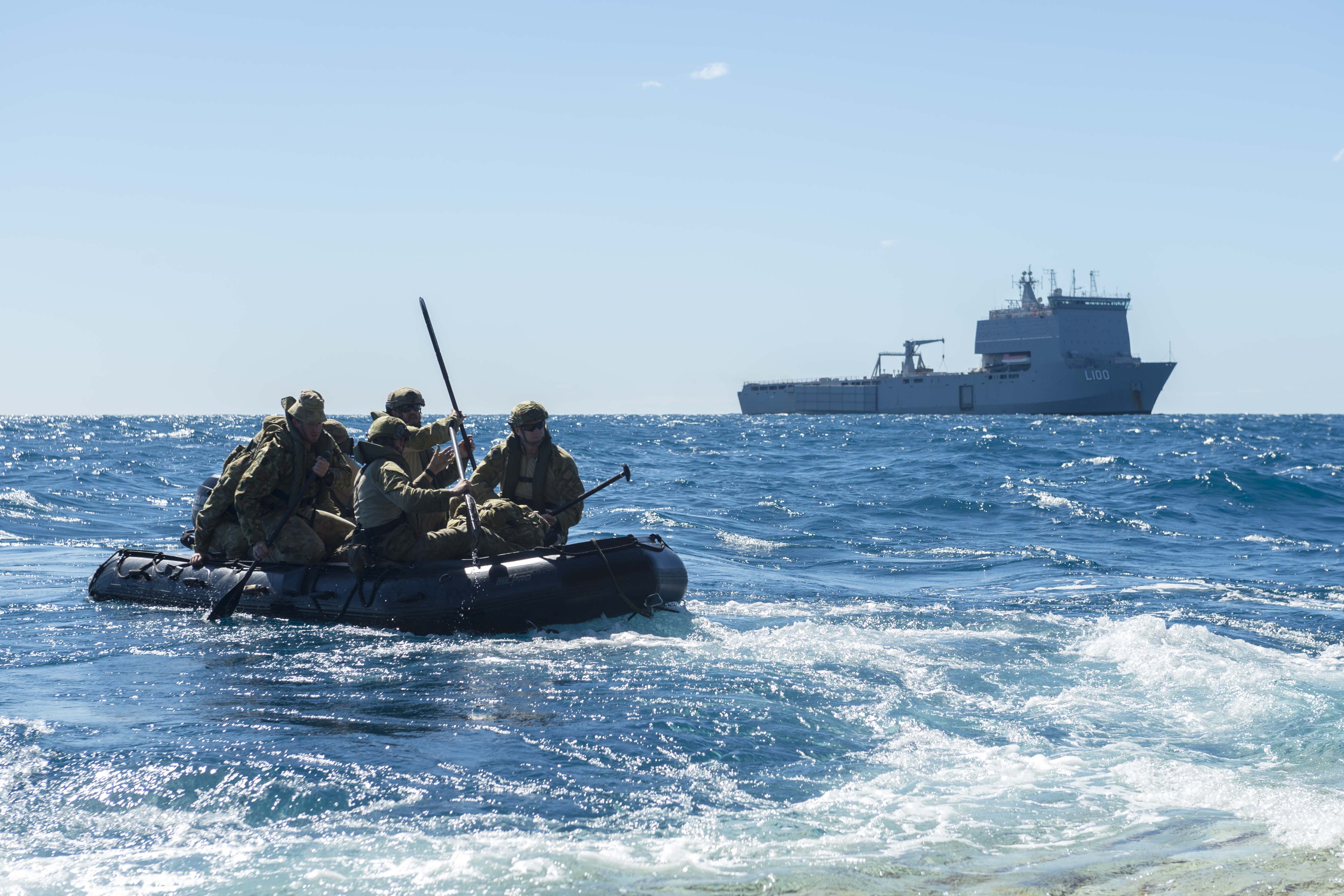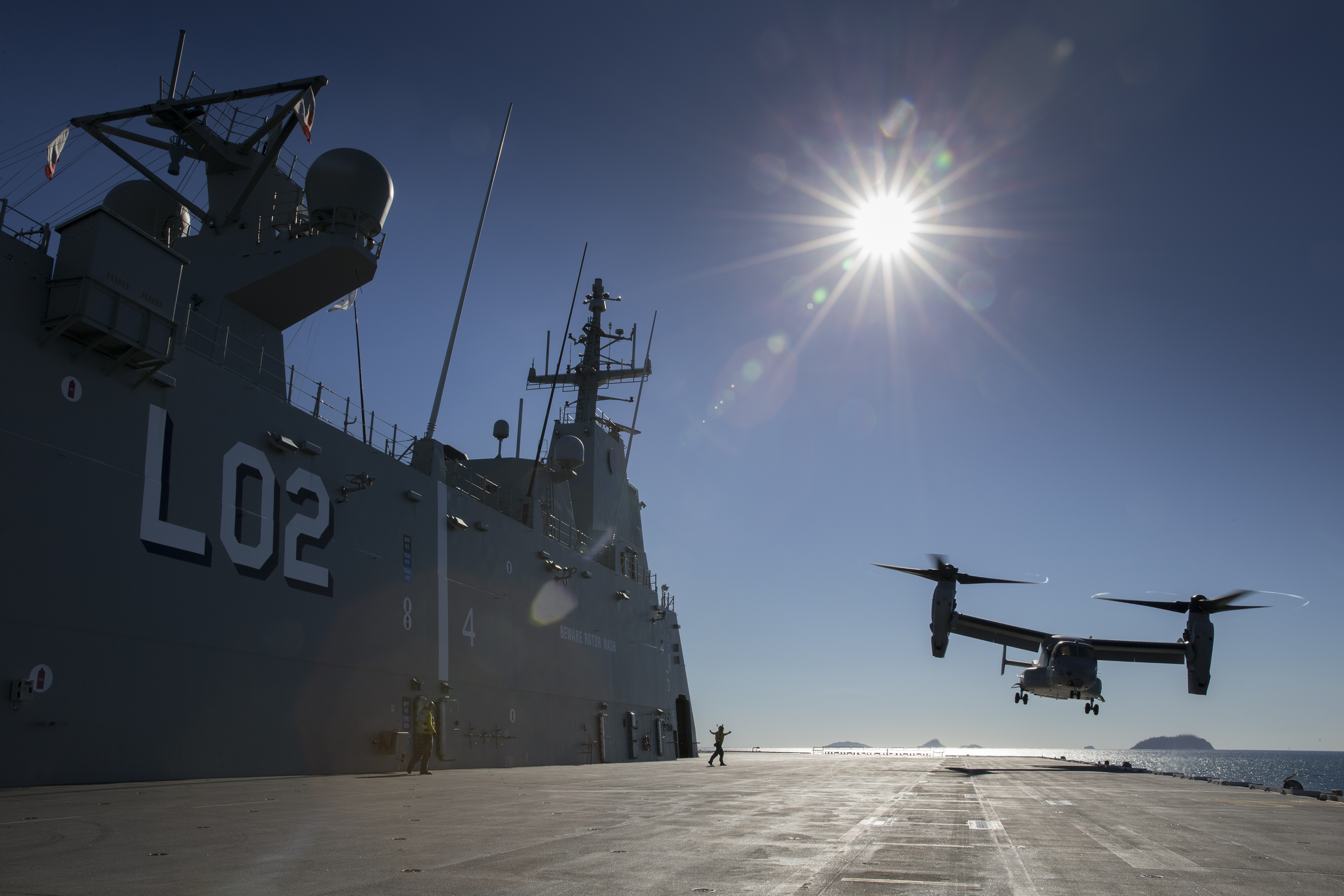
The Australian Defence Force (ADF) is nearing full operational capability of its amphibious force, after a six-year effort to turn an Army battalion into the heart of a joint-service expeditionary capability akin to the U.S. Marine Corps.
Despite being an island itself, and having only islands as its closest neighbors, the ADF never set up a dedicated amphibious force. As part of an effort to modernize its military, though, Australia decided in 2011 to turn its 2nd Battalion of the Royal Australian Regiment (2 RAR) into a permanent pre-landing force, with other Army units rotating through annually to serve as the ground combat element on the ADF’s three-ship Amphibious Ready Group.
After years of planning, reorganizing and training, the commander of the ADF’s Deployable Joint Force Headquarters has certified that the amphibious force is ready for operations, after using this summer’s Talisman Saber 2017 exercise as a final certification event. All that remains is for the Chief of Navy to sign off on that recommendation, certify that the three amphibious ships are deployable, and declare the force fully operational.
Maj. Gen. Paul McLachlan, commander of the Deployable Joint Force Headquarter and the Australian Army’s 1st Division, told USNI News that this year’s final certification event came on the heels of a very successful year last year and a half, which included sending the new Canberra-class large amphibious ship to its first real-world disaster relief mission, and participating in the Rim of the Pacific (RIMPAC) 2016 exercise.
In February 2016, HMAS Canberra (L02) deployed to Fiji after Tropical Cyclone Winston severely damaged the island chain. Operation Fiji Assist 2016 was Canberra’s first operational deployment and perfectly demonstrated a primary purpose of Australia’s amphib force: to support humanitarian assistance and disaster relief missions in the region.
Just months later, 2 RAR soldiers boarded Canberra and sailed to Hawaii for RIMPAC 2016, where they could practice not only HA/DR missions but also higher-threat missions as part of a multinational coalition – the other intent for the amphib force.

One benefit of the RIMPAC participation was that “we got to show the region, all the participants at RIMPAC, the Canberra class and where we are with it and where we are with our amphibious force,” McLachlan said, adding that the exercise also demonstrated an important lesson to the ADF.
“It’s not just about that amphibious capability. The blue water requirements, the joint capability required, the air and sea control, the escort, the submarine that are required to employ amphibious forces successfully are important. So bringing that amphibious capability into the ADF RIMPAC deployment was absolutely fantastic to open their eyes as to what’s required in the successful employment of an amphibious force.”
McLachlan said the international component of RIMPAC and again at Talisman Saber 2017 were important, given the vision for Australia’s amphibious force.
“We’re a small-middle power, we have no aspirations of unilateral force projection, but certainly the ability to transport and sustain forces, joint forces within the region is an incredibly important capability and something that the government decided that we would pursue,” the general said.
“We strive to become a contemporary force, and in a nation that is as much an island as Australia is, it makes absolutely no sense if you don’t have the capacity to deploy a legitimate and competent amphibious capability. We’re not aspiring for this to be a significant force projection capability – because to be perfectly frank that is beyond the capacity we have designed and trained for – but that capability would certainly be a highly competent contribution to a multinational coalition in a higher threat spectrum, if that were required and authorized. Closer to home, it gives us an amazing capability to go and help the region, and that is one of the key aspects that we are building and training this force to deliver.”
Though intuitive for the island to have an amphibious force that can respond to natural disasters or join Pacific allies in a bigger fight, the development of the force hasn’t been without challenges.
First was finding the manpower. The ADF decided early on it couldn’t support a Marine Corps, so the venture would have to be a joint service one, with a hybrid model that relied on some full-time experts and some rotating units. In the end, 2 RAR was selected to serve as the permanent force that will conduct pre-landing activities – the 300 or so soldiers in the unit will serve as the command and control element, small boat operators, reconnaissance and snipers that go ashore on the small boats, a communications element and a logistics element. The actual ground combat unit that will be brought ashore for the fight will rotate each year.
To train this rotational ground combat force, a Sea Series of exercises will serve as training and certification events: Sea Explorer will assess command and control, Sea Horizon will ensure the soldiers are proficient at embarking and debarking by surface craft and helicopters, and Sea Raider will be an overall demonstration of amphibious capability that will certify that year’s unit as ready to deploy.

McLachlan said this is a big change for the ADF, which brings with it some cultural problems, but he said he’s confident the amphibious force is on the right path.
“The amphibious capability is fundamentally going to change the way the whole ADF operates because it is a particularly utilitarian capability in our region, and the whole – all of our Army, Air Force and Navy – need to understand what they have to bring to the amphibious capability. Now, that’s going to take a period of time to inject into our ADF, so it’s an evolutionary thing and I personally believe that we’re going to need to do those yearly rotations for about six years before we start to really generate a fully informed and pervasive amphibious awareness and capability within the ADF. But once we get there, I think there will always be someone in the readying force that has a good deal of amphibious understanding, so we will get better at it over that time.”
In the event of a major contingency, he said, the rotational ground force concept would mean a larger pool of soldiers would be familiar with amphibious operations and therefore could deploy aboard Australian or allied ships if needed.
Still, operating onboard a ship is not necessarily a talent all the soldiers wanted to learn.
“We have soldiers that joined to be soldiers, who now find themselves operating for long periods of time off a ship in the maritime environment,” he said.
“Now, if you join the [U.S.] Marines, you know what you’re in for. But five years ago, if you joined 2 RAR you did not expect to be deployed on and from a ship. … The organization is changing quite significantly, and that is just part of the amphibious journey going forward, but learning how to operate on the ship as well as staying good at being soldiers operating off the land has been a significant challenge that actually I think has been very well handled by the 2nd Battalion.”

Another cultural challenge has been learning to operate in a joint environment – something certainly not unique to the ADF, as U.S. military officials still cite that as a challenge for them. McLachlan noted the move to “joint command and control systems off what has previously been a single-service platform, so you’ve got to get people willing to give up bandwidth from the ship’s operating capability in order to achieve the joint mission, and that’s a very difficult thing to achieve.”
McLachlan said he expected to see the quality of the amphibious force to go up as more annual rotations occur, but he said he’s proud of the progress that has been made leading up to Talisman Saber 2017.
“From my perspective, we demonstrated a certifiable capability for the amphibious element that was deployed on Talisman Saber, and that advice has gone up” to the Chief of Navy for consideration, he said.





